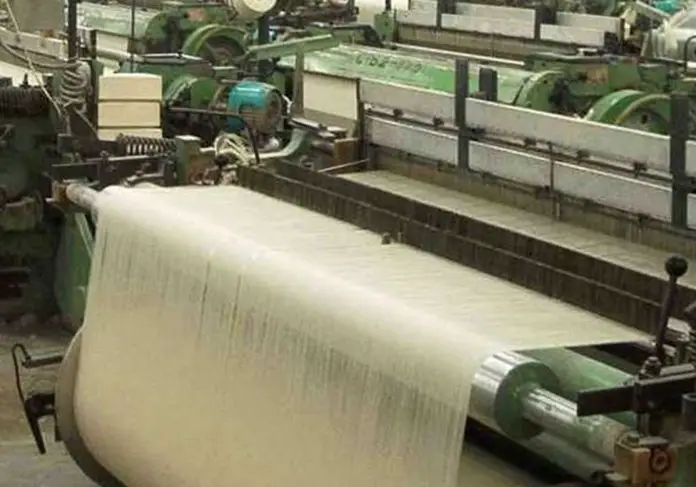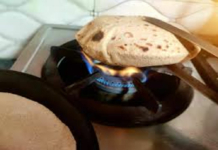By M Khubaib Ahmad
Maslow’s hierarchy of needs describes food, shelter, and clothing in “Physiological Needs” (lowest level at hierarchy). Textile is a perishable item which means that billions of people are going to ask for textiles multiple times in a year creating a massive demand for the product. The accumulated number of people in the world is around 7.8 billion. Estimated global demand for textiles is one trillion USD in 2022 with the growth rate of 4%.
In the 18th century, industrial scale manufacturing of textile started in New England. Textile industry saw exponential growth and grew to multiple countries across the globe. In 1783, the first cotton-spinning machine was invented by Richard Arkwright. Industrial manufacturing of fabric is done by installing manmade or synthetic fibres into manual or shuttle-less looms. The need of hour was to maximize production while using minimum recourses available. Basic raw materials used in the manufacturing of fabrics are cotton, electric supply, and labour along with machinery. Industrial Revolution played a vital role in increasing the production of textile with less human effort.
Jeremy, D. J. (1973) states that “Generally, market pressures compelled the large-scale production of cheap, standardized, low-quality goods, at first. Attempts to compete against British imports, as in the woolen industry, brought failure. Only when technological innovation supplied versatile equipment (like the cotton roving frame differential or the fancy loom dobby) for manufacturing cheap and medium-to-fine goods, could British products be challenged.” These technological advancements acted as a blessing in disguise for the American economy and achieved efficiency in flow of operations.
Multiple processes are involved to manufacture a fabric from natural or synthetic fibres. Fibres are converted into yarn through spinning process and this yard is then used to formulate a fabric through weaving or knitting. A lot of labour is required for harvesting, carding, drawing, spinning, and warping of fibres. These processes (when done manually) cost a huge number to the industrialists. However, automatic machinery for plucking, doffing, and piecing resulted in up to 400 percent increase in output due to capital saving in labour.
Khanna, S. (1989) mentioned that “Rising capital intensity per unit of output implies that the modern technologies will be introduced only if the higher capital costs are offset by the savings in the wages, power and lower wastage of raw material. Sharply rising economy wide productivity and wage rates in the advanced capitalist countries has obviously made it economically worthwhile for textile firms to introduce these new technologies.”
However, not all the textile products can be made efficiently through technical advancements. Some products like bandhni, ikat, tie and dye or heavy bridal dresses required a lot of skilled labour to manufacture these products. If the organizations are hesitating to shift towards modern high-tech machinery for their operations, they must hold a cultural value attached to the product. With his additional value they will charge a premium from customers to stand out against economies of large-scale production.
Mukund, K. (1992) concludes that “under conditions when costs declined internationally due to technological improvements and organisational changes, traditional industry could not continue as a viable system unless it adapted its production processes to the new technology at least partially to internalise these cost advantages. A secondary pattern of survival can be seen in the case of textiles which were closely identified with the socio-cultural ethos of particular regions of people.”
As the modern technology looms for textile manufacturing are capital intensive, skilled labour must work hard to produce 100 percent output to get better return on investment for the producers. Those manual skills which were eliminated by the introduction of new electronic devices in the looms, created unemployment for that particular skill set group in labour. Therefore, labour must learn new skills required to operate new technology along with the manual skills they had of conventional methods. For this very purpose labour unions came into action and asked for subsidy for additional efforts being done by them.
R. C. Datta. (1996) studies the effects of labour union and new technologies and states that “there is no doubt that workers and their union have resisted the introduction of these technologies but ultimately they have settled for or exchanged it for higher wages and some functional flexibilities. Some of the workers who resisted to the efficiency norms have been dismissed by the management.”
Old technology in textile manufacturing looms is a comparatively slow process but gives the worker more liberty over the labour process. Worker is responsible for entries of per minute production and overall consumption of raw material in a traditional register. Spinning process has a sider whose job is (stopping a spindle by hand) to piece broken ends, doffer-gaiter to replace empty and filled bobbins, a jobber, and a helper. The yarn spins at 17,000 rpm along with 250 meters per minute weft insertion rate.
R. C. Datta (1999) explains the perks of modern technology as “in the case of new technology the speed of operation is around 1,00,000 rpm with the insertion rate 1,800 metres per minute, in spinning there is no jobber, no sider and no doffer-gaiter. There is a piecer ‘carriage’ and an ‘auto-doffer’ mounted on the micro-electronically controlled spinning machine. The job of piecing is taken over by the piecer carriage which continuously keep moving over the spinning machine to locate thread breakage and pieces.” With the display monitor it shows (automatically recorded) accurate data related to efficiency and effectiveness of loom with reduced labour process.
Gap between supply and demand of textiles generated a need to introduce new technology in the textile manufacturing industry. Modern technologies offered cheap labour rates and ten times more production but with capital and power costs. Machines with increased efficiency produced multiple textile products to compete against British imports. Private textile manufacturing industry owners and labour unions, who resisted to change the status-quo ended up making value-added textiles which have socio-cultural value like bandhni, tie-dye etc. to earn increased profits required for their survival. Labour was given comparatively higher wages and functional flexibilities because they had to learn how to operate modern technology which required extra effort. Workers who refused to either learn new technology or making value-added textiles faced un-employment. Conventional manufacturing process was dependent a lot on the worker whereas modern technologies reduced the number of workers required per machine, increased production by seven-fold and achieved consistency in its flow of operations. Technological advancements had changed textile industry once and for all. Those who went along with the process experienced success by leaps and bounds and crafted their ways for a bright future.







